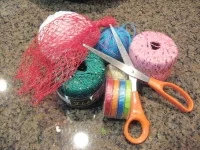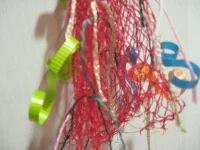In our discovery call, author Patti Richards mentioned that she wanted a teacher guide for her delightful new picture book MRS. NOAH that would be appropriate for two educational markets, Christian and traditional. Instead of vacation bible school-like crafts using pipe cleaners and popsicle sticks, Patti wanted some academically-aligned, quality content appropriate for kindergarteners to third grade kids. Tall order. No problem.
In the story, Mrs. Noah partners with Noah to prepare for their journey on the ark. Instead of mapmaking and hammering nails, Mrs. Noah focuses on ‘creature comforts’ - good food, cozy hand-knit caps...all loaded with loving care. The story is tender and sweet, one that needs to be in the hands of every young reader. Teachers don’t have a problem with a tender tale as long as the lessons in the guide are substantial and meet required educational standards.
The type of educator guide Patti chose was the CCSS and NGSS-aligned Discussion/Project Guide which is composed of pre-reading & post-reading discussion sections and three easily adaptable lessons appropriate for grades K-3 exploring story structure, skip-counting, and the animal kingdom. We covered just about all the curriculum bases in one pop! You can find out more about the book and the guide here. But for fun, I’d like to talk you through the crafting of the animal kingdom lesson. How does that sound?
While I’m sure some invertebrates (insects, protozoa, worms, snails...you get the picture) weaseled their way onto Noah’s ark, I focused on classifying the Vertebrate Phylum. The tools I used in creating this project were InDesign, Photoshop, Google Drive and Canva. Here's the procedure I followed.
Research short definitions for each class represented in the Invertebrate phylum - mammals, amphibians, birds, reptiles and fish. Print definitions on circular-shaped templates.
Gather two photos of animals from each class. Import those into circular-shaped templates.
The Animal Kingdom - Vertebrates Template: Create the master grid line art sans circular-shaped image templates.
The Animal Kingdom - Vertebrates Template Answer Guide: Create a separate answer guide by adding the circular-shaped image template to the master grid.
The Animal Kingdom Images & Labels: Duplicate the answer guide including the circular-shaped images and definitions. Delete the master grid line art. Arrange the circular-shaped images on the page.
In the lesson procedure, educators are directed to encourage the students to search through the book to discover examples of each class - Mammals, Reptiles, Birds, Amphibians and Fish. Then, using scissors, instruct students to trim around the circular-shaped image templates and match them where they belong on the master Animal Kingdom - Vertebrates Template.
Who knows? Maybe Mrs. Noah’s story might be a child’s first impression of zoological taxonomy! If so, we want the experience to be unforgettable!
For more educator guides like this one, stop by the Guides by Deb website where you’ll find over 300 standards-aligned guides crafted for all ages and genres. There is something for everyone there.
Debbie Gonzales is an author, educator and a Pinterest Management Specialist. Learn more about Deb and her many fascinating projects at debbiegonzales.com and guidesbydeb.com.

































